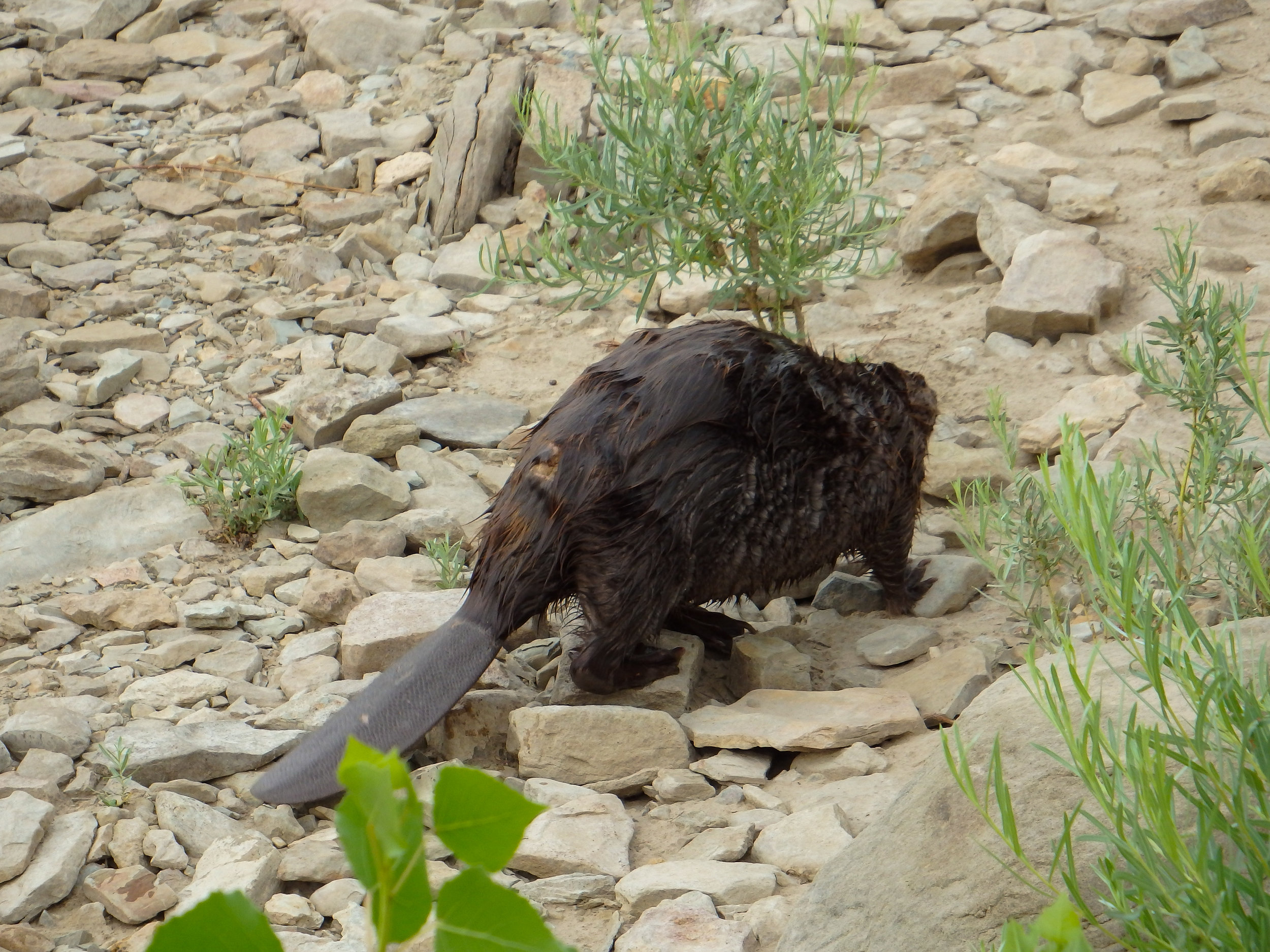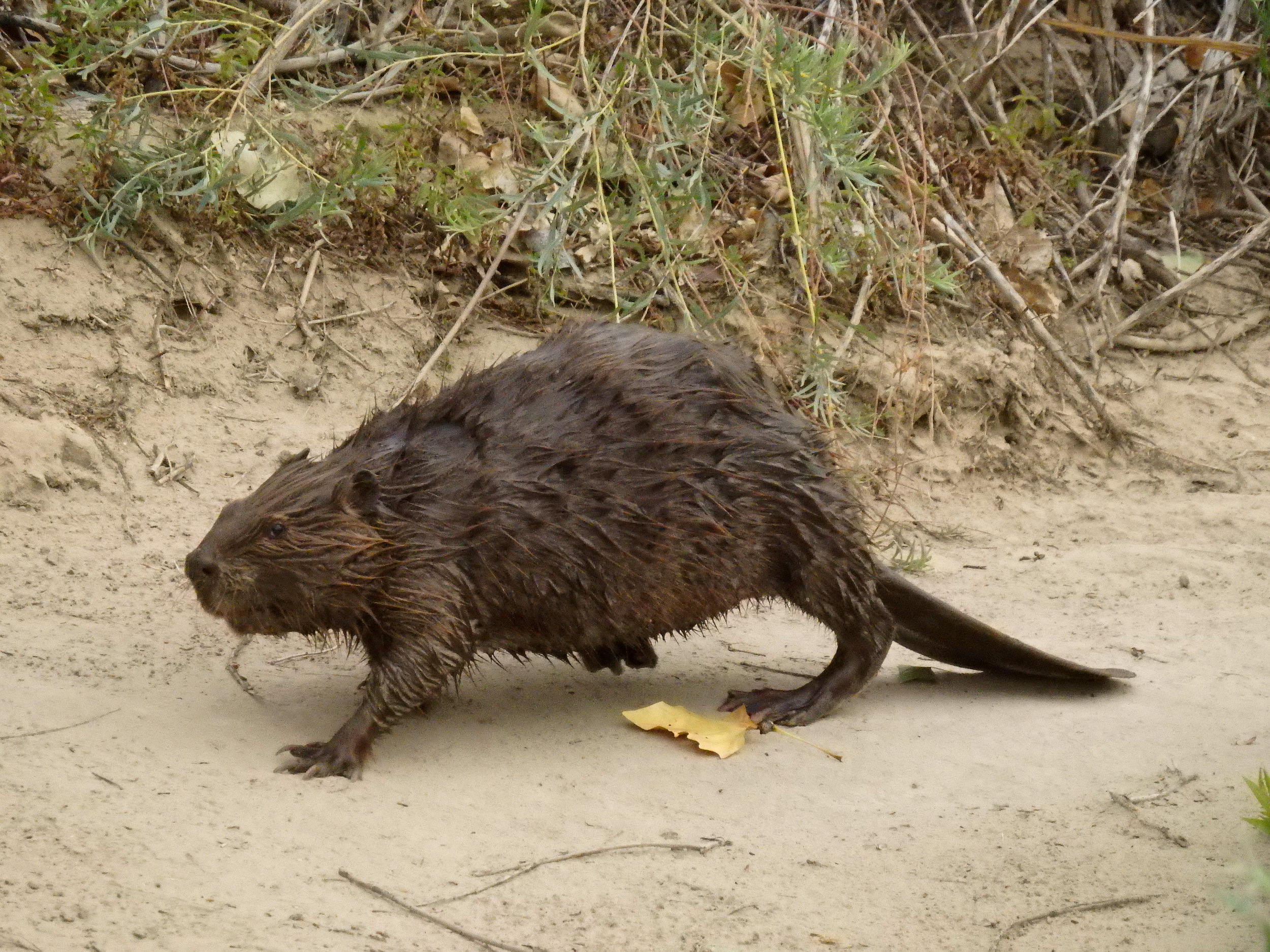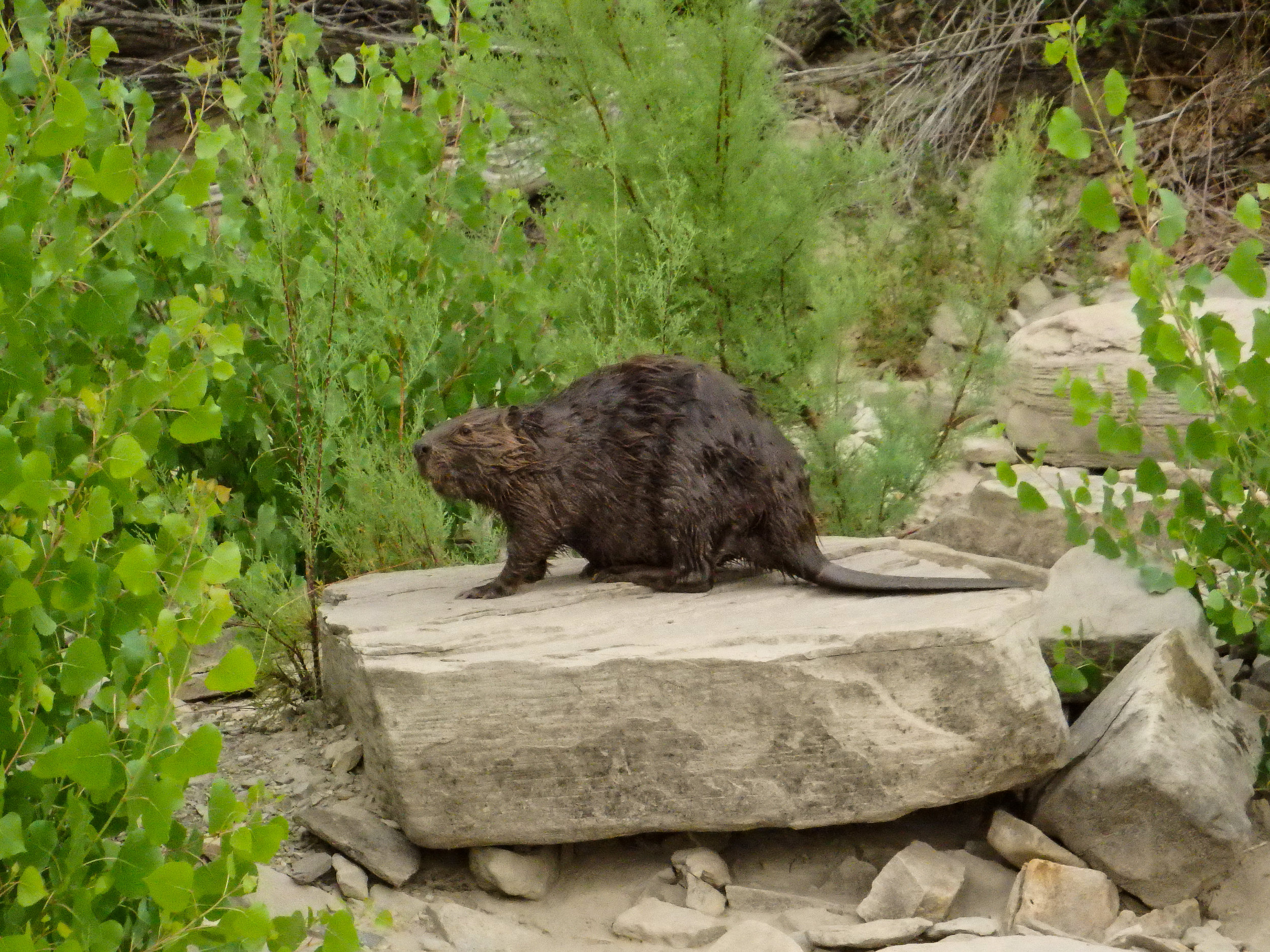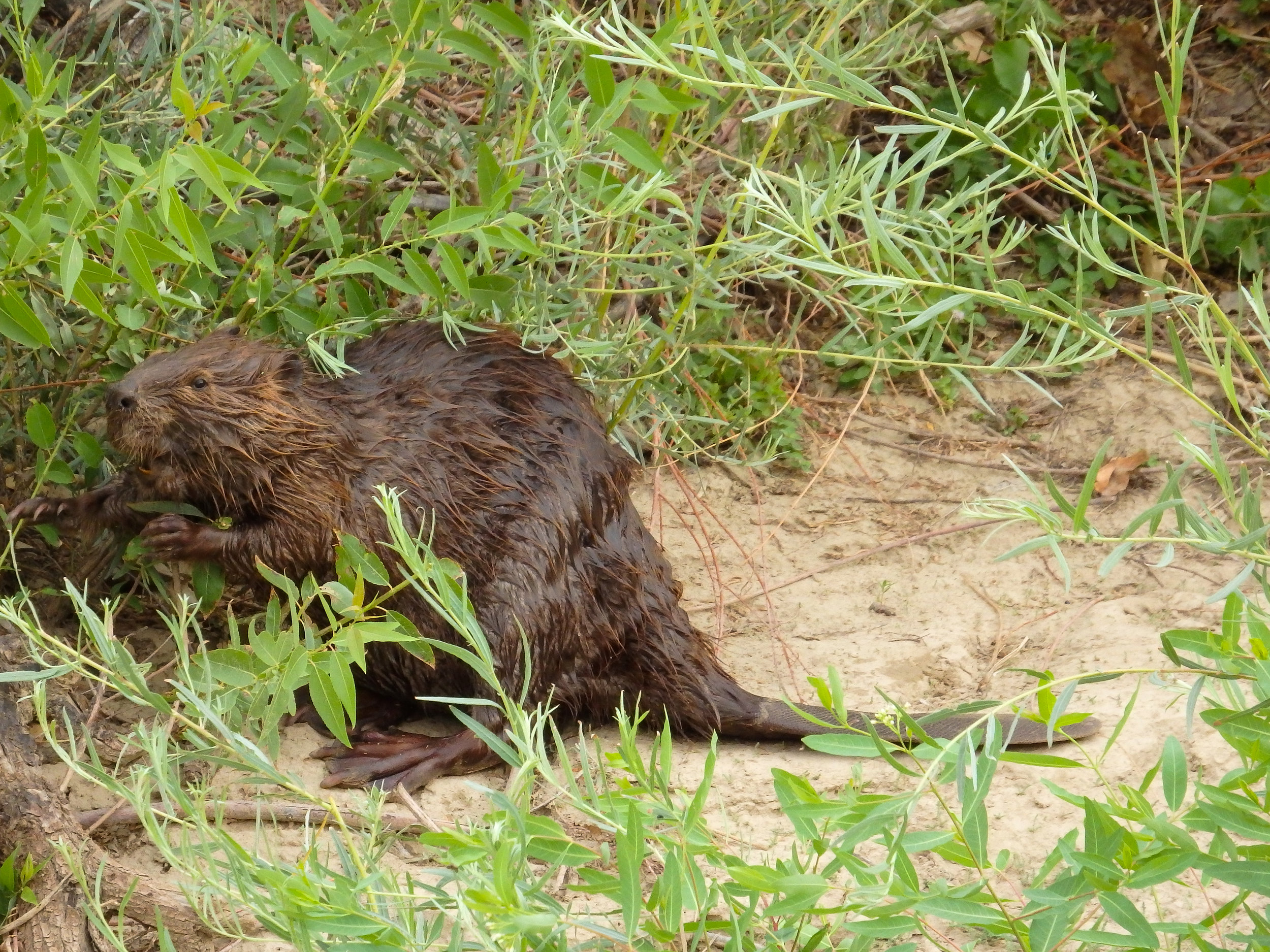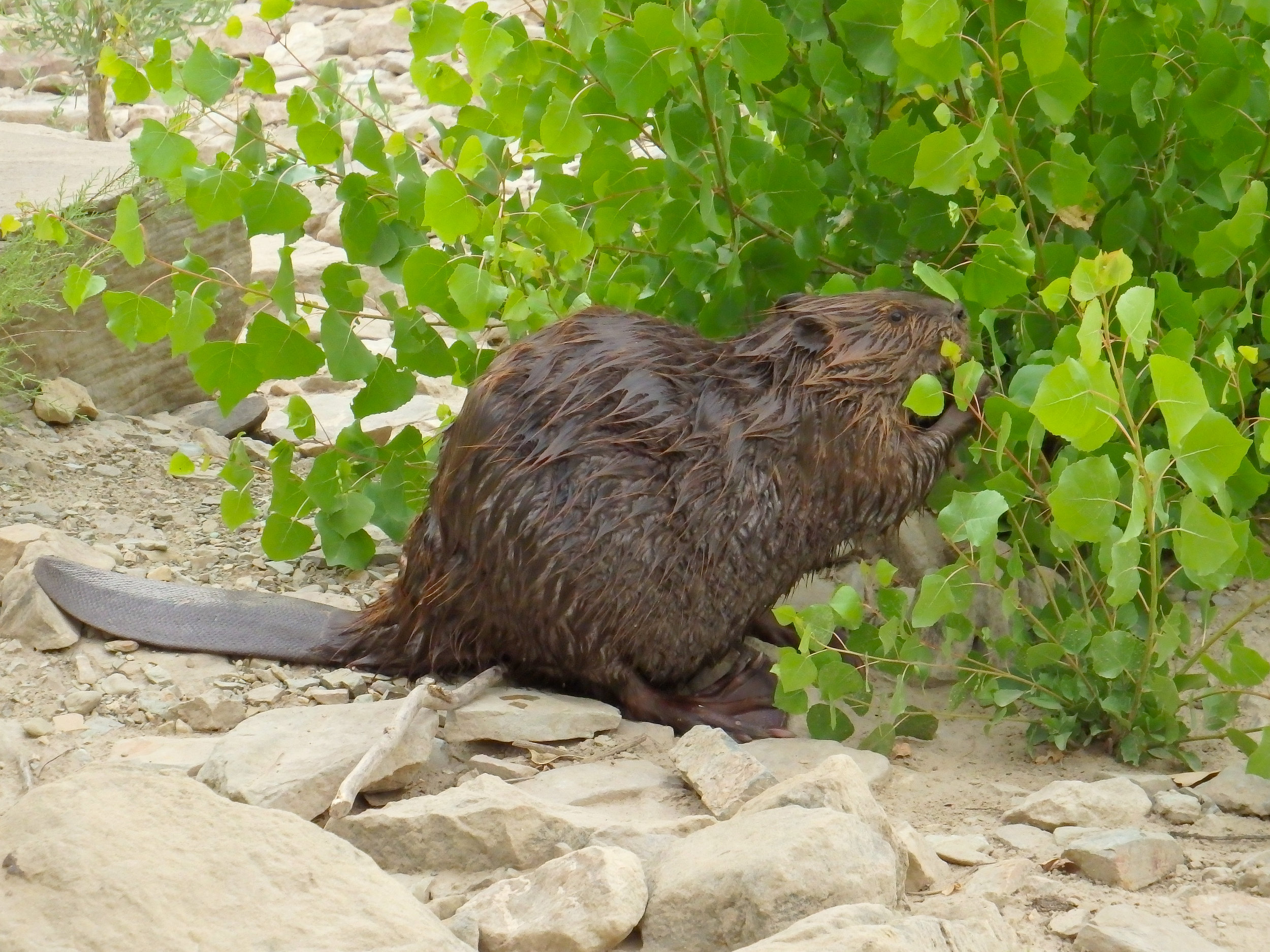The Northwestern American Beaver
Recently I visited the other Green River in Utah. As we were setting up our whitewater rafts for a seven-day trip down the Desolation-Grey section of the Green we had a very unusual visit. From across the river a beaver started swimming gracefully towards us. His body and tail undulating fluidly through the water. He made his way to the rocky beach and without hesitation lumbered onto land and nonchalantly walked by our boats and equipment on his way to some young cottonwood trees with bright green leaves. He completely ignored us and instead focused on munching on his evening meal of cottonwood leaves. We were able to stand just feet away from this allusive wild river creature and watch him eat his dinner.
Munching on Tasty Green Cottonwood Leaves
I’ve always been curious about the, often maligned, beaver. I had an early morning glimpse of a beaver along the Green at Flaming Geyser State Park on the Green River in Washington. That morning I heard a crack and saw a tree branch fall into the river from a riverside maple tree. Then I watched as it began moving downstream at a pace far faster then the current. Upon closer inspection I realized that it was driven by a beaver. He steered that branch into a small alcove created by a larger downed tree along the far shore of the river. Then he proceeded to stuff that branch into the alcove where it disappeared. Unfortunately I wasn’t set up to take fast moving low light photos so I didn’t adequately capture this whole occurrence on an early morning photo shoot.
They have this drive to dam water. Why? Beavers create refuges in deeper pond water to create an escape from predators. They dam up running water to create these deep-water pools. They literally react to the sound of running water and use twigs and mud to dam up the moving water. Besides creating these refuges they build lodges made up of the trees, twigs, mud, and rocks. They are usually strategically located in the middle of the ponds in a their dam and can only be access by underwater entrances for protection. Inside these lodges store food, raise young, and seek protection from the winter weather. Through their industrious construction of dams and lodges they can change the course of rivers and create ponds and lakes where there had only been fields and forests. The results of their work help store runoff, recharge ground water, and provide habitat for other species. They improve water quality by creating filtration and slowing the movement of runoff so it has time to filter and for sediment to settle.
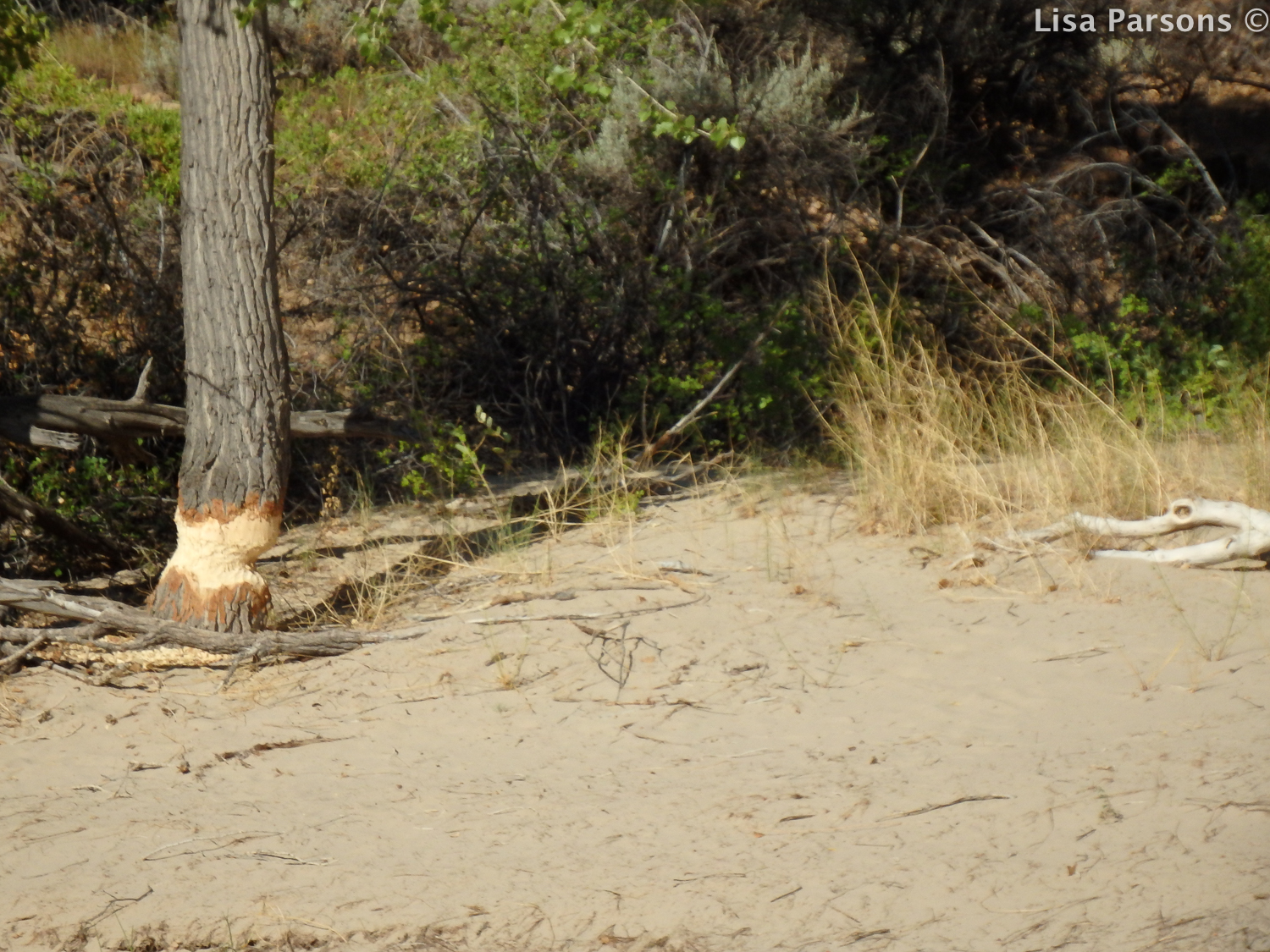

In my history classes I learned about how early explorers in the Americas were shaped by the pursuit of the fur that these critters possessed. AS beaver populations were exhausted on the east coast, the fur trade pushed exploration and settlement out west and, as a result, decimated beaver populations throughout America and Canada. Beaver pelts were sought after for making clothing and beaver hats. Then as settlement expanded they were hunted to prevent them from doing what they do best, building dams. Their industrious pursuit could result in flooded crops and homesteads. As they were hunted their population of 100-200 million dwindled to near extinction.

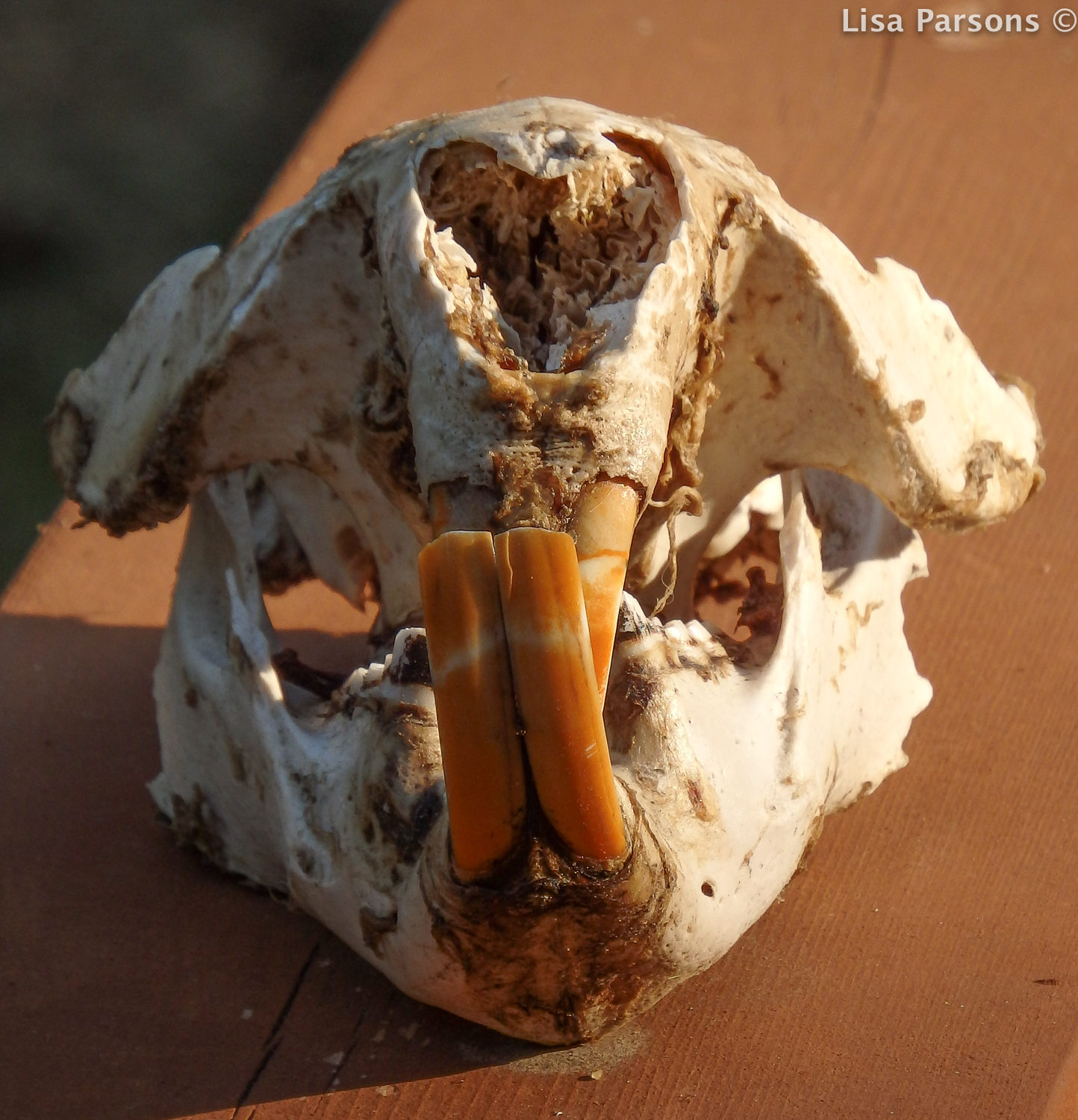
Today, through protections in the late 19thand 20thcenturies beaver populations have rebounded to estimated population of 10-15 million. Since that time they are still controlled but we’ve come to understand the ecological value of having beavers in our natural world.
Beaver Dam at Flaming Geyser along a side channel.
In the Green River, beavers still make their space within the confines of the river gorge. The one that I saw at Flaming Geyser was creating a lodge in a riverbank on the deep side of a turn. They migrate as well and may be found in side or many of the springs and seeps that flow into the Green River Gorge. Downstream as the Green becomes the Duwamish and is channeled into a narrow passage, government agencies are working to expand side channels and flood plains, which play an important role in salmon conservation. Perhaps there will be a place for beavers to help with the restoration projects to protect and restore the health of the river. Within the Gorge, due to its isolation and lack of development, beavers may find a habitat free from the constraints of a human centered riverscape.
Beaver Swimming in pond in the evening
For more info on beavers you can visit these websites:
https://en.wikipedia.org/wiki/North_American_beaver
https://www.nationalgeographic.com/animals/mammals/b/beaver/



